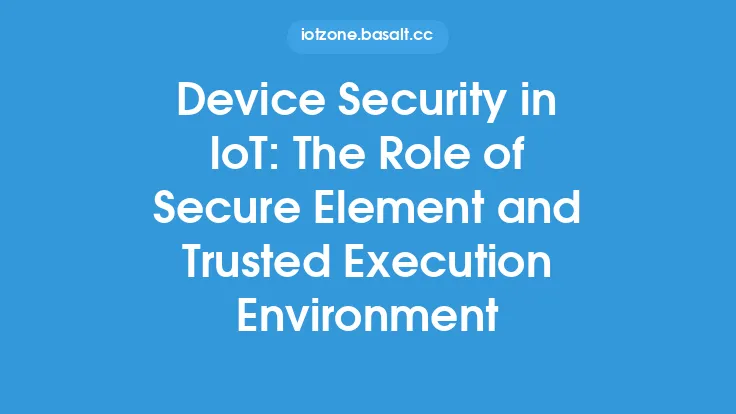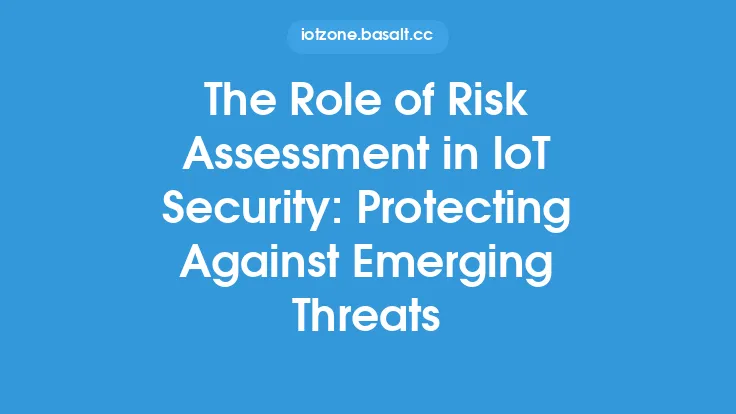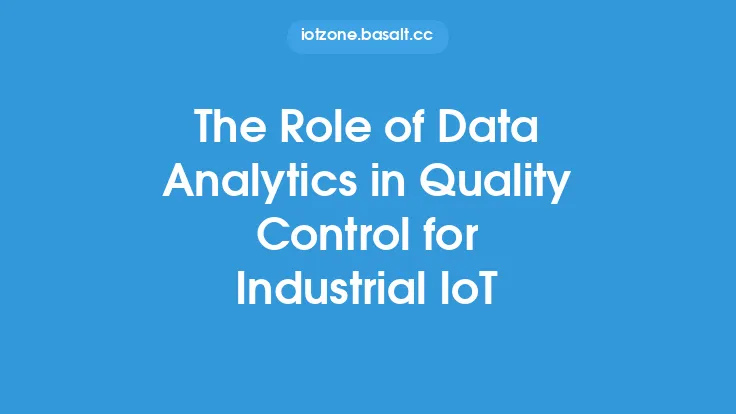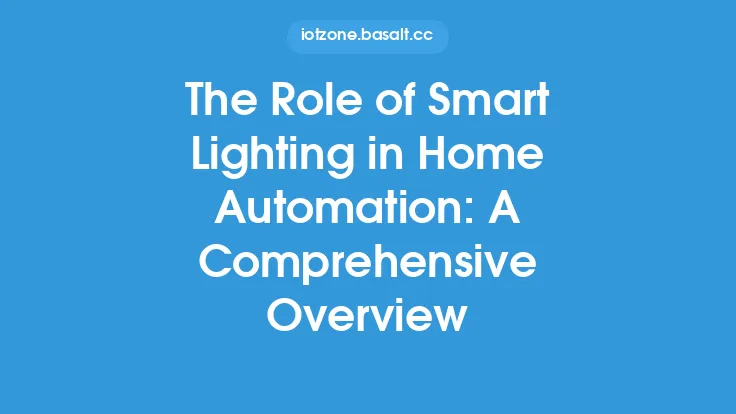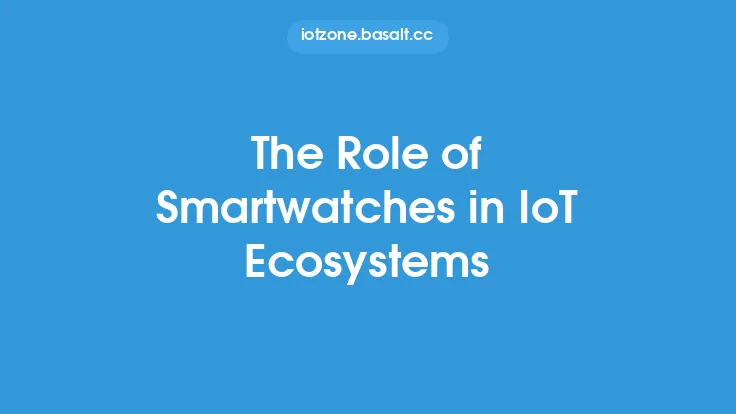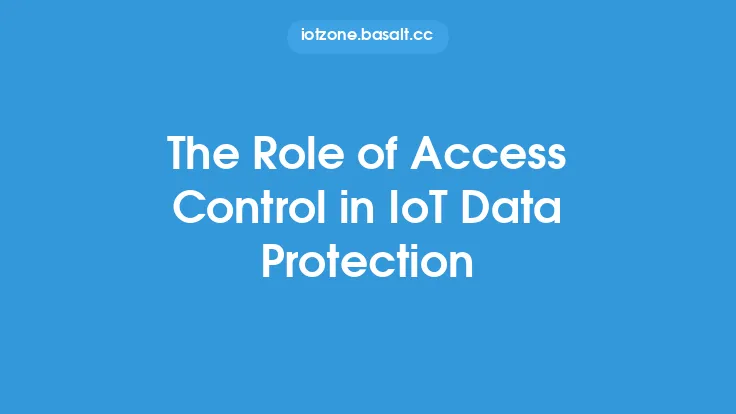The increasing complexity and interconnectedness of the Internet of Things (IoT) have raised significant concerns about security and accountability. As the number of IoT devices grows, so does the potential for security breaches and data compromises. In this context, governance plays a crucial role in ensuring accountability and mitigating the risks associated with IoT security. Governance in IoT security refers to the framework of policies, procedures, and standards that organizations must follow to ensure the secure development, deployment, and management of IoT devices and systems.
Introduction to IoT Governance
Governance in IoT security is essential to ensure that organizations are accountable for the security of their IoT devices and systems. This involves establishing clear policies and procedures for the development, deployment, and management of IoT devices, as well as ensuring compliance with relevant regulations and standards. Effective governance in IoT security requires a comprehensive approach that involves multiple stakeholders, including device manufacturers, network operators, and end-users. It also requires a deep understanding of the technical and operational aspects of IoT security, including device authentication, data encryption, and network segmentation.
Key Components of IoT Governance
There are several key components of IoT governance that are essential for ensuring accountability and security. These include:
- Device Management: This involves the development and implementation of policies and procedures for managing IoT devices, including device authentication, firmware updates, and device decommissioning.
- Network Security: This involves the development and implementation of policies and procedures for securing IoT networks, including network segmentation, firewalls, and intrusion detection systems.
- Data Protection: This involves the development and implementation of policies and procedures for protecting IoT data, including data encryption, access controls, and data backups.
- Compliance and Regulatory Affairs: This involves ensuring compliance with relevant regulations and standards, including those related to data protection, privacy, and security.
- Incident Response: This involves the development and implementation of policies and procedures for responding to security incidents, including incident detection, containment, and remediation.
Technical Aspects of IoT Governance
From a technical perspective, IoT governance involves several key aspects, including:
- Device Authentication: This involves the use of secure authentication protocols, such as TLS or DTLS, to ensure that only authorized devices can connect to the network.
- Data Encryption: This involves the use of secure encryption protocols, such as AES or RSA, to protect IoT data both in transit and at rest.
- Network Segmentation: This involves the use of network segmentation techniques, such as VLANs or VPNs, to isolate IoT devices and prevent lateral movement in the event of a security breach.
- Firmware Updates: This involves the development and implementation of secure firmware update mechanisms, including secure boot mechanisms and firmware validation.
- Intrusion Detection and Prevention Systems: This involves the use of intrusion detection and prevention systems to detect and prevent security threats in real-time.
Benefits of Effective IoT Governance
Effective IoT governance provides several benefits, including:
- Improved Security: By establishing clear policies and procedures for IoT security, organizations can reduce the risk of security breaches and data compromises.
- Increased Accountability: By establishing clear lines of accountability, organizations can ensure that individuals and teams are responsible for IoT security and can be held accountable in the event of a security breach.
- Better Compliance: By ensuring compliance with relevant regulations and standards, organizations can reduce the risk of non-compliance and associated fines and penalties.
- Reduced Risk: By identifying and mitigating potential security risks, organizations can reduce the risk of security breaches and data compromises.
- Improved Reputation: By demonstrating a commitment to IoT security and governance, organizations can improve their reputation and build trust with customers and stakeholders.
Challenges and Limitations of IoT Governance
Despite the benefits of effective IoT governance, there are several challenges and limitations that organizations must be aware of. These include:
- Complexity: IoT governance can be complex and require significant resources and expertise.
- Cost: Implementing effective IoT governance can be costly, particularly for small and medium-sized enterprises.
- Lack of Standards: There is currently a lack of standards and regulations for IoT governance, which can make it difficult for organizations to know what is expected of them.
- Limited Visibility: IoT devices and systems can be difficult to monitor and manage, which can make it challenging to detect and respond to security incidents.
- Evolving Threats: IoT security threats are constantly evolving, which requires organizations to stay up-to-date with the latest threats and vulnerabilities.
Best Practices for Implementing IoT Governance
To implement effective IoT governance, organizations should follow several best practices, including:
- Conduct a Risk Assessment: Conduct a comprehensive risk assessment to identify potential security risks and vulnerabilities.
- Develop a Governance Framework: Develop a governance framework that outlines policies and procedures for IoT security.
- Establish Clear Lines of Accountability: Establish clear lines of accountability and ensure that individuals and teams are responsible for IoT security.
- Implement Security Controls: Implement security controls, such as device authentication, data encryption, and network segmentation.
- Monitor and Manage IoT Devices: Monitor and manage IoT devices and systems to detect and respond to security incidents.
- Stay Up-to-Date with the Latest Threats and Vulnerabilities: Stay up-to-date with the latest threats and vulnerabilities and update security controls and policies accordingly.
